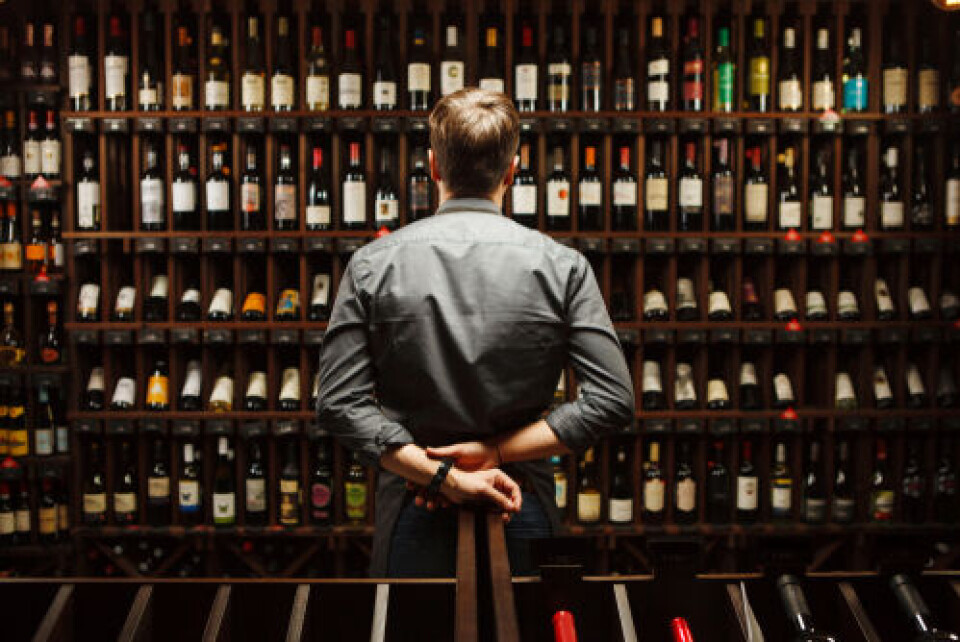-
Hosting scheme in south-west France lets newcomers sample lifestyle
Households in nine Dordogne communes volunteer under Mes Nouveaux Voisins scheme
-
French boulangeries demand right for staff to work on May 1 so they can open
Artisan bakery owners can work but employees cannot, while certain industrial bakeries are allowed to remain open with workers
-
How many Americans live in Paris - and where else are they choosing in France?
Over a quarter of all US nationals in France live in the capital city
American drinkers push French alcohol exports to new record
Emphasis on luxury and quality over quantity as exports reached over €17billion in 2022, a welcome boost for the industry amidst struggles on the home market

French wine and spirits exports reached their highest ever figure in 2022, helped considerably by American drinkers, who counted for nearly 30% of all exports. British drinkers accounted for 10% of exports.
It comes as inflation, lowered domestic consumption and the war in Ukraine led to producers having an otherwise difficult year.
Exports of these alcohols reached €17.2billion, an increase of 10.8% on 2021’s figures, allowing those who work in France’s second largest export industry – behind aerospace – to breathe a sigh of relief.
“The results are remarkable,” said Antoine Leccia, vice president of French Wine and Spirits Exporters Federation (FEVS), although there has been an upward trend for some time.
Sales of luxury brands are a driving factor behind the increase; “champagne, cognac, premium wines, and high quality spirits” contributed to the record-breaking year; exports of cognac outside of France grew by almost 10%.
The increased exports were not just directed towards large multinational companies and shops but sector-wide across all markets, particularly outside of Europe.
“75% of exports are sent outside of the EU,” said César Giron, president of the FEVS.
The figures must be taken with caution, however, as they may be affected by inflation levels seen worldwide.
British and Americans opt for luxury
Exports to the US were up nearly 14% compared to 2021, accounting for almost €5billion of the total figure.
Exports to the UK increased by 7% compared to 2021, accounting for €1.7billion.
Luxury products led the way, with both Americans and Britons drinking pricier alcohols.
In the US, luxury wines did not only sell more in terms of market share, but also in quality, with more buyers opting for expensive bottles.
The British market remains strong thanks to champagne exports but also in part due to luxury wines.
The volume of wine exported to the UK decreased but the overall value per bottle increased.
Over 326 million bottles of champagne were shipped worldwide last year, an increase of 20% on the year before.
Exports of the beverage outranked domestic sales (56.1% against 43.9%) with overall champagne sales breaking the six-billion euro threshold for the first time.
Markets grow in Asia
Exports to Asian countries also showed promise; despite China only having a 0.5% growth in exports, many other countries in the region saw double digit growth including Japan, South Korea and Taiwan.
New export markets are emerging too in the region, such as in Vietnam.
The successes came despite stricter sanitary conditions caused by Covid-19, and the market is only expected to rise in the coming years.
Welcome news after a difficult year
The report will bring good cheer to winemakers across France, who have been struggling with a number of issues in recent years.
Unrelated to the closing of bars due to successive Covid-19 lockdowns, less people in France are drinking wine, leading to a slump for the domestic market.
Up to 20% of French people abstain from alcohol, according to Susie Goldspink of the IWSR Drinks Market.
Read more: Why France’s alcohol-free cocktail boom is ‘not just a trend’
Some vineyard owners are resorting to distilling excess wine, or even tearing up vines that have existed for generations.
Producers want to make excess into pure alcohol for spirits - or even hand gel - to avoid a glut in the market.
Read more: Wine producers in France to distil surplus to avoid price drops
Certain production costs have soared since the outbreak of the war in Ukraine; champagne bottles use aluminium fabric to protect the champagne cork, but the cost of aluminium has increased 50% since the war’s start.
Some producers have started using eco-friendly paper to wrap champagne bottles, caused in part by price increases.
Prices for glass, cardboard, and even for wooden crates have also increased in the last 12 months.
For luxury producers, these costs can be mitigated, but for winemakers who sell less expensive wines, profit margins can be seriously affected.
“The less expensive the wine, the more complicated it is for producers, who take the full brunt of rising production costs,” said César Giron.
Related articles
What is the future of organic wine in France and do consumers care?
French sparkling wines to rival Champagne on price and taste
























